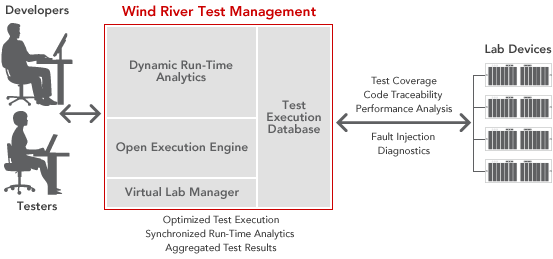Thomas Honold wrote an article published on EETimes giving 17 steps to safer C code. Not only this article provides tips to write safer C code, but I believe those steps are simply best practices when writing C code for embedded systems as they shorten the software life cycle by making it easier for a software team to write, debug and maintain code and by improving the software QA procedure. Here’s a summary of the 17 steps to achieve safer C code: Follow the rules you’ve read a hundred times: Initialize variables before use. Do not ignore compiler warnings. Check return values. Use enums as error types. Define an ENUM_MAX value at the end, so that the code to check the range does not have to be modified each time you add a new error code. Expect to fail Always assume there will be an error and set to default […]
Embedded Linux QA with Wind River Test Management 4.0
Wind River has just announced the release of Winder River Test Management 4.0, a test suite specialized in testing embedded devices and allowing the test teams to optimize the testing effort by focusing resources on high-risk areas and deliver a high-quality embedded software solution on time. New Features and Enhancements New preconfigured test suite generators: The following new test suite generation methods are available: Create a test suite based on coverage and execution time: Selects test case instances that will generate the maximum coverage given a fixed time constraint . Create a test suite based on execution results: Selects test case instances that have run with specific final status values. Create a test suite based on requirements: Selects test case instances that are associated with specific requirement records to ensure that all requirements have a test associated with them and are thoroughly tested. Create a test suite based on defect […]



